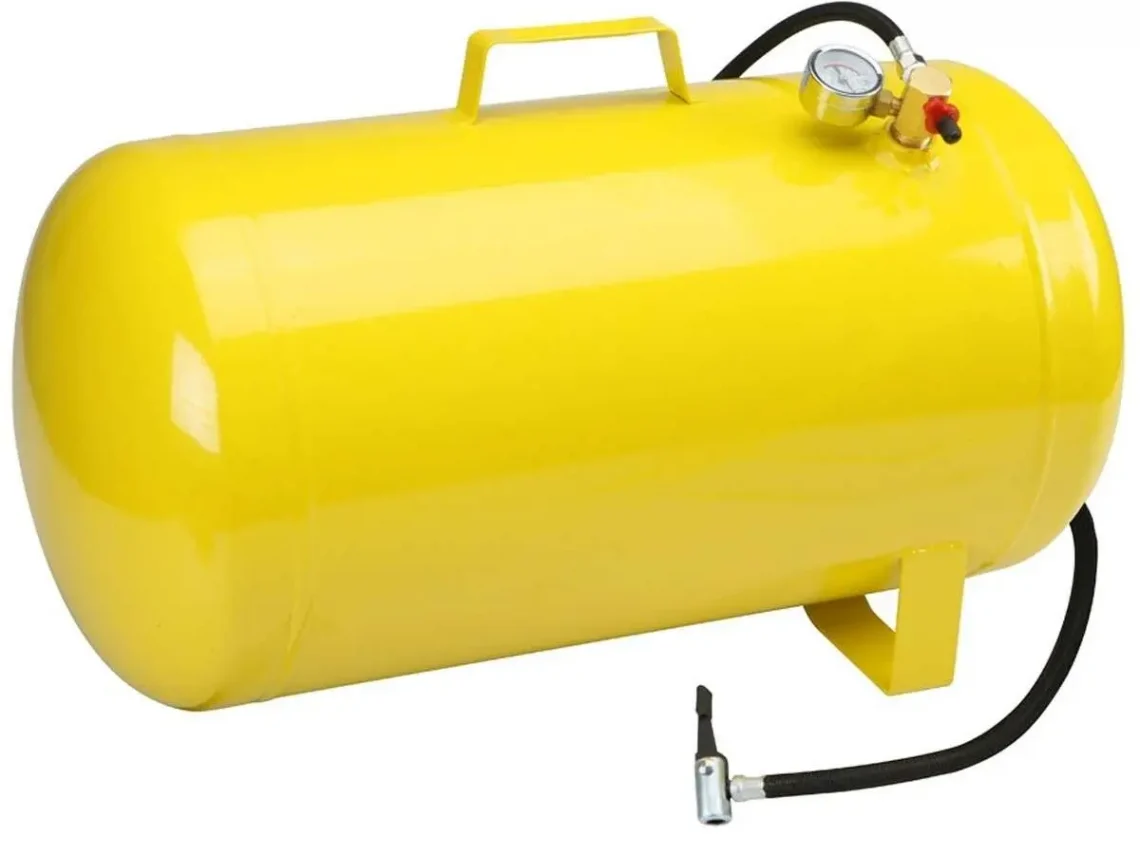
Table of Contents
ToggleHigh pressure air tanks are integral to many industrial applications, functioning as essential components in systems that require the safe storage of compressed air. These tanks not only power equipment but also ensure operational reliability. A high pressure air tank, also known as a pressure vessel, must meet stringent safety standards. At Red River, we design and manufacture these tanks with a focus on durability, precision, and compliance with ASME codes—ensuring safe and efficient operations in demanding environments.
To understand when a tank legally becomes a pressure vessel, see Understanding Pressure Vessels: Definitions and Thresholds
Pressure vessels, including high pressure air tanks, are designed to safely contain substances at pressures far greater than atmospheric levels. These tanks are critical across industries—from manufacturing plants to medical facilities—where they support pneumatic control systems, breathing apparatuses, and more. To understand how compressed air tanks are treated as pressure vessels, see Understanding Compressed Air Tanks as Pressure Vessels. Red River’s tanks are built to ASME standards, guaranteeing safety, efficiency, and long-lasting performance.
Also, water heaters under pressure are a type of pressure vessel—details in Understanding Water Heaters: Are They Pressure Vessels?.
The design of a high pressure air tank is critical for functionality and safety. Each vessel is engineered to withstand extreme conditions and constructed under strict ASME Code requirements. At Red River, we use top-grade materials such as carbon steel and stainless steel for superior strength and corrosion resistance. Every tank undergoes rigorous testing to confirm it meets required pressure ratings, ensuring reliable operation in all applications.
For more on the purpose of pressure vessels, see Understanding the Purpose of a Pressure Vessel with Red River LLC.
Pressure ratings classify high pressure air tanks and define the maximum safe limits for operation. By strictly following ASME regulations, Red River guarantees that each tank can withstand extreme pressures without compromising safety. Certifications prevent risks like over-pressurization and protect both equipment and personnel.
According to OSHA, a pressure vessel is generally any storage tank designed to operate at pressures above 15 psi. OSHA
Safety is paramount when dealing with compressed air. Our tanks feature safeguards such as pressure relief valves and are designed for easy inspection and maintenance. Preventative care and regular checks extend the service life of these tanks while reducing risks. At Red River, we emphasize safety and reliability in every design.
At Red River, we believe high pressure air tanks are more than products—they are vital assets for safe and efficient operations. With American-made craftsmanship, ASME compliance, and a dedication to safety, our tanks deliver unmatched reliability. Whether you need stationary or portable solutions, Red River has the expertise to meet your requirements..
A pressure vessel is specifically designed to contain liquids or gases at a pressure significantly higher than the ambient environment. Standard storage tanks typically hold contents at or near atmospheric pressure, whereas pressure vessels, such as compressed tanks, are built to safely handle high-pressure conditions.
Yes, compressed air tanks can be used to store gases other than air, such as nitrogen or carbon dioxide. However, each gas type requires specific considerations regarding tank materials and safety features due to factors like flammability or corrosiveness.
Regular inspections are essential to ensure the safety and longevity of a compressed tank. It is recommended that tanks undergo thorough inspections at least once a year, depending on usage and the environment in which they are placed.
Compressed tanks are critical for storing high-pressure air safely, essential in many industries.
Compliance with ASME standards is necessary for ensuring the structural integrity and safety of pressure vessels.
Regular maintenance and inspections are crucial for the safe operation of compressed air tanks.
Red River provides top-quality compressed air tanks that meet stringent safety and performance standards.
Table of Contents
ToggleIn the realm of industrial solutions, Red River emerges as a pioneer, offering a diverse range of custom-engineered products and facilities. Among our specialties is the design and production of Custom/OEM Pressure Vessels, meticulously crafted to meet individual client requirements, ensuring performance under various pressure conditions. Our expertise extends to the domain of prefabrication, where Red River leads with distinction.
The company excels in creating prefabricated facilities, modules, and packages, reinforcing its stance as a forerunner in innovation and quality. This proficiency is further mirrored in their Modular Skids offering, where they provide an array of Modular Fabricated Skid Packages and Packaged equipment. Each piece is tailored to client specifications, underlining their commitment to delivering precision and excellence in every project they undertake.